
As summer gets closer and the air heats up, we’re hearing that familiar question again – Can I run my boat’s air conditioner from my battery bank?

As summer gets closer and the air heats up, we’re hearing that familiar question again – Can I run my boat’s air conditioner from my battery bank?

As tough a job as it is, trying to sell air conditioning and refrigeration up north here in the midst of ice storms, arctic blasts, and brass-monkey weather, is nothing compared to installing the stuff in those sorts of conditions.
 It seems that there's an ongoing quest in some circles for the holy grail of boating comfort: 12 volt air conditioning. Yet few seem to fully appreciate the benefits of the more practical, but far less complex and substantially less expensive alternative: 115v AC air conditioning powered by a DC source through an inverter. Many boats these days already have inverters installed, and if not, there's a wide range of inexpensive models available that are suitable for powering small air conditioners.
It seems that there's an ongoing quest in some circles for the holy grail of boating comfort: 12 volt air conditioning. Yet few seem to fully appreciate the benefits of the more practical, but far less complex and substantially less expensive alternative: 115v AC air conditioning powered by a DC source through an inverter. Many boats these days already have inverters installed, and if not, there's a wide range of inexpensive models available that are suitable for powering small air conditioners.
This post will focus on small air conditioning systems that are suitable for sleeping cabins or for small boat applications. With a small unit, the DC current draw is low enough that they can usually be powered by an engine alternator whenever the engine is running, as well as from the batteries when required. Of course, any sized air conditioner can be powered by batteries through an inverter, it is just a matter of practicality.
To better understand the differences between the two concepts, some comparisons are shown below between the Climma Compact 4,200 Btu 115v AC unit and the Dometic Cuddy II 3,500 Btu 12v DC model.

Is variable speed marine air conditioning really worth it?
OK, I admit it. I’m a graphaholic. I can’t turn the pages of a newspaper without studying each and every graph and chart, regardless of the subject matter. I make them, I dream of them, and I get itchy if I don’t pore over a graph or two for a few days. (Today I studied one showing the rate of decline in teenage marriages in Bangladesh since 1970). But I’m also acutely aware that the accuracy of any conclusions gleaned from graphs and charts are totally dependent on the validity of the data they are constructed from. Remember; Garbage in - Garbage out.
I turned to graphs recently in my quest to ascertain whether employing variable speed compressors in self-contained marine air conditioning units (i.e. compressor, blower and other bits and bobs all together on one base) really has any great benefits, especially considering the considerable extra cost and complexity involved.
Compared to a contemporary self-contained unit, a variable speed model requires the addition of a number of special sensors plus an electronically controlled expansion valve, all feeding data into a specialized electronics package that powers a three-phase compressor.
There’s a lot to go wrong there, and no way to jury-rig an override if the electronics suffer premature death from water ingress, lightning, or even just plain ol’ electrickery.
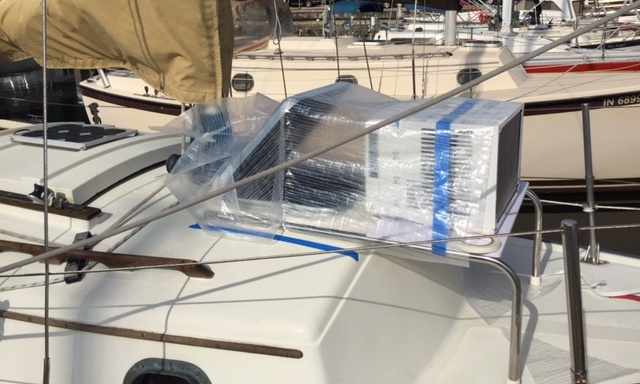
18 Helpful Tips to install air-conditioning on your boat
As a lad I once took flowers to a girl I fancied when visiting her in hospital. Her mother shook her head and immediately removed them from sight, just as the poor thing in bed started sniffling and sneezing. How was I to know that she suffered from hay fever?
I once accidently filled an almost empty 40 gallon diesel tank with water on a sailboat after a race. No fun for me that night, having to drain and dispose of that much stinky, milky water in the exclusive playground of Puerto Cervo, Sardinia. I blame the boatbuilder for not putting the filler in the wrong place.
Mistakes. We all make them. Some more than others ...
So, when contemplating the installation of an air conditioning system on a boat, it’s well worth taking time in the planning stages to minimize the possibility of mistakes, because inevitably some will happen. Installing air conditioning on a boat as an after-market exercise is about the most invasive and disruptive thing you can do to your floating dream palace, and there are few short-cuts available when doing it correctly.
However, there are a number of logical steps you can take, and many potential pit-falls can be identified during the planning stages.
Reliable and Affordable DC air-conditioning options
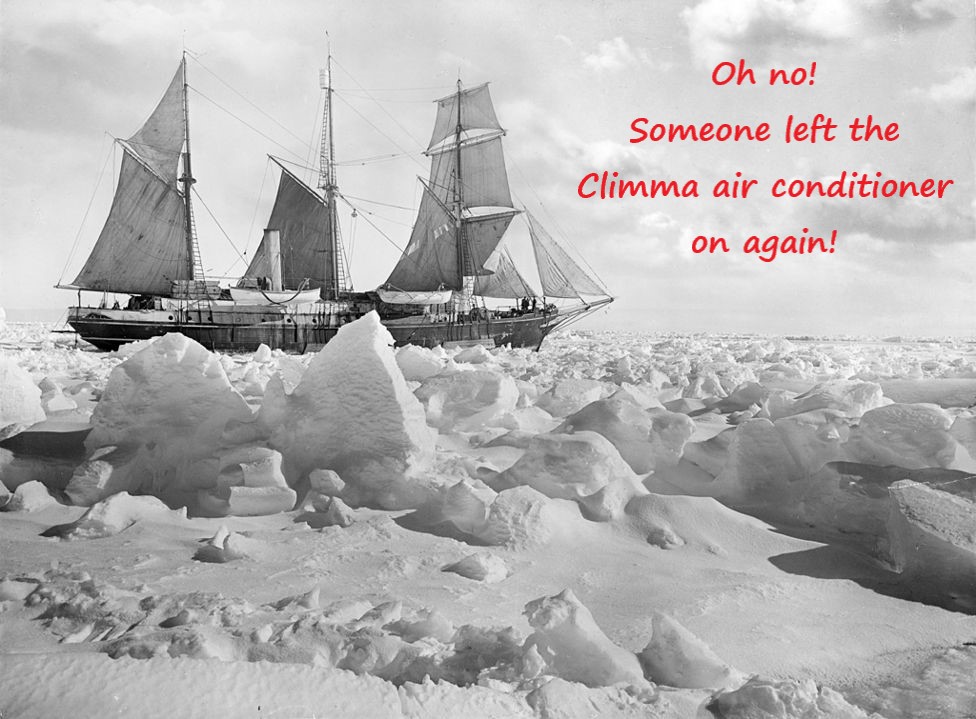 It seems that there’s an ongoing quest in some circles for the holy grail of boating comfort: DC air-conditioning, either 12v or 24v. Yet few seem to be aware of the more practical, but far less complex and expensive alternative - 115v AC air-conditioning powered by batteries through an inverter.
It seems that there’s an ongoing quest in some circles for the holy grail of boating comfort: DC air-conditioning, either 12v or 24v. Yet few seem to be aware of the more practical, but far less complex and expensive alternative - 115v AC air-conditioning powered by batteries through an inverter.
An inverter is a device that changes battery power into the mains power that you have in your home or the shore power on your boat. So many boats these days already have inverters installed, many of which will be combination inverter/chargers, and there’s a wide range of inexpensive models available that are suitable for powering small marine air conditioners.
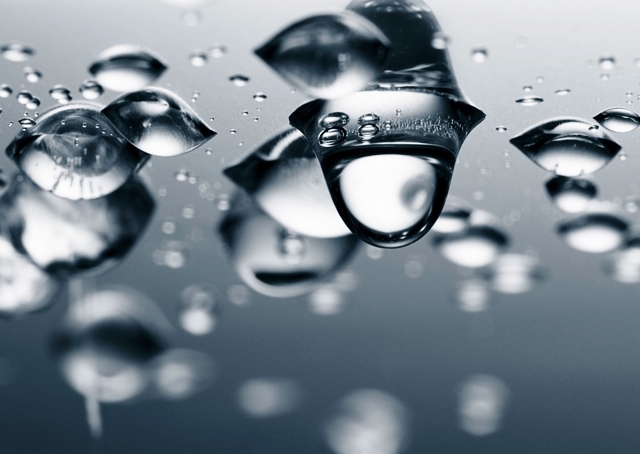 When the seasons change from Spring to Summer, there is always a certain amount of reluctance to fire up the air conditioning in our house until it's absolutely necessary.
When the seasons change from Spring to Summer, there is always a certain amount of reluctance to fire up the air conditioning in our house until it's absolutely necessary.
After being closed up for the Winter, having fresh air blowing through the house is so refreshing that no one is in any rush to seal off the outside world again until things get too uncomfortable.
The comfort issue for me is more a matter of excessive humidity rather than temperature, and when it gets to the point that I can feel the curtains and furnishings getting heavy and limp with moisture, I know that it's time for the air conditioning to come to the rescue.
Last year, before turning the air conditioning on, I placed a gallon jug under the condensate drain to see just how much moisture would be removed during the first hour. Our 30,000 Btu (2.5 Ton) system for our ground floor removed 1 gallon in the first 45 minutes, which equates to 1.33 gallons per hour.
Our last blog explained that condensing the moisture out of the air is not a free additional benefit of cooling the air, as it comes at a hefty price.
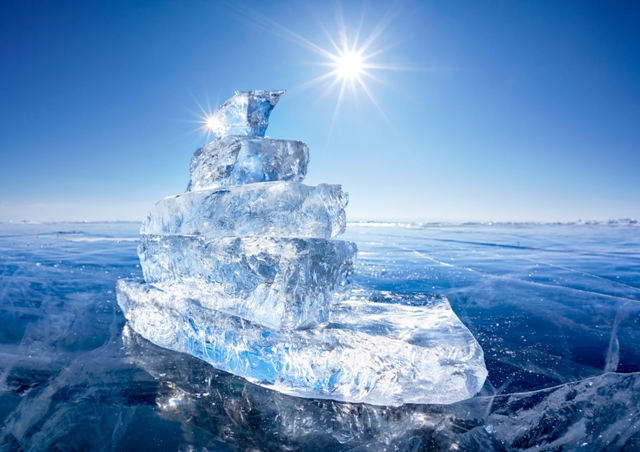
You’ll never see anyone waving to you out of a super-yacht window. That’s not because the occupants are stuck-up unsociables, but simply due to the fact that the windows don’t open.
No wind scoops or Sears window units for these amazing machines, but rather a highly complex and sophisticated HVAC (Heating, Ventilating, and Air-Conditioning) system.
So let’s say you strike oil in your garden and are thinking of ordering a superyacht (defined as being a vessel over 80’). You want only the best and so you want Climma to provide the air conditioning, but how and where does it all start?

We’re getting a lot of inquiries lately asking for the starting current figure for the compressors in the various air conditioners Coastal Climate Control offers. Why is that? We guess it is because increasing numbers of boaters and installers want to run air conditioners from small, often portable, generators, or from inverters, and they are trying to match the compressor load to the generator/inverter output. Let’s first take a look at what this starting current is all about. If you’re not interested in the technical mumbo-jumbo skip to Part 2.
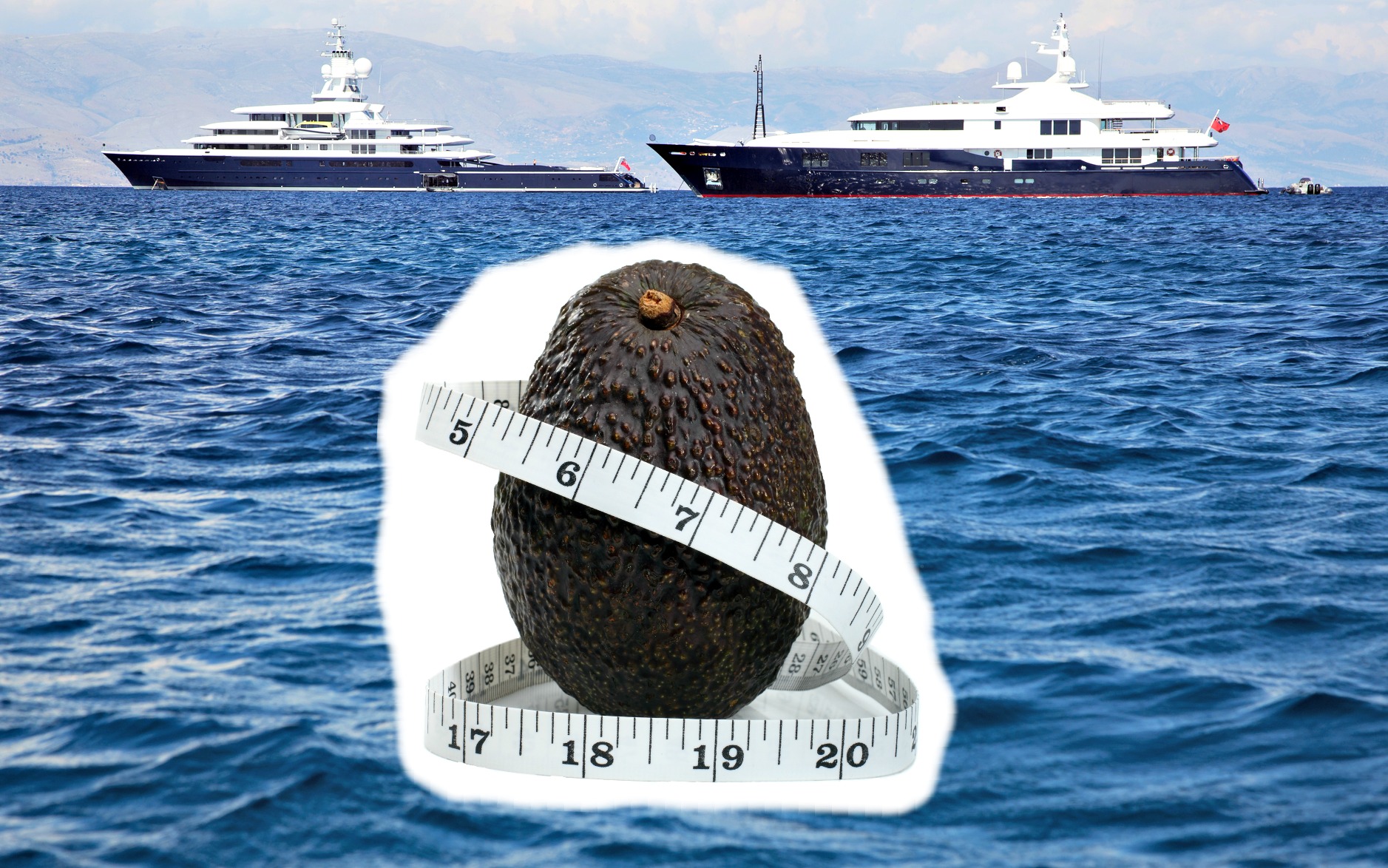
Imagine that you are just walking into the grocery store when your significant other calls and asks that you also pick up an avocado, but is insistent that it must have a small stone and maximum flesh. Normally the biggest challenge with avocados is finding the almost-ripe ones and then getting them home before they whisk through the ripe stage in transit and swiftly progress to the over-ripe stage just as you unpack them. But this stone-size issue poses a different challenge.
Now you're in the produce section and you find a choice of two offerings of avocado; regular and organic. Knowing the variety or origin is no help, (no Siri on your flip-phone and your Mum told you never to talk to strangers) and both are of the same size, color, and weight, with the organic version being higher priced. So, how would one determine which pile of avocados would have the highest probability of having the smallest stone?
If it were me I would take one from each pile, and then once back home secretly use a pin to pierce the skin to see which had the smallest stone. If the stone in that one is declared by your S.O. to be too large and you're accused of being an incompetent shopper, present the other and wager that the stone in that one would be even larger. That should be good for $10! (Warning! Trying the pin trick at the store will probably result in the manager demanding you purchase the entire display of avocados, as there's no way of knowing which ones you'd pricked with your germ-infested pin and then put back.) And because you had the savvy to buy two avocados, you now have more than enough flesh than was requested and the rest can go on the salad.
Choosing a marine air conditioning unit poses a similar conundrum.
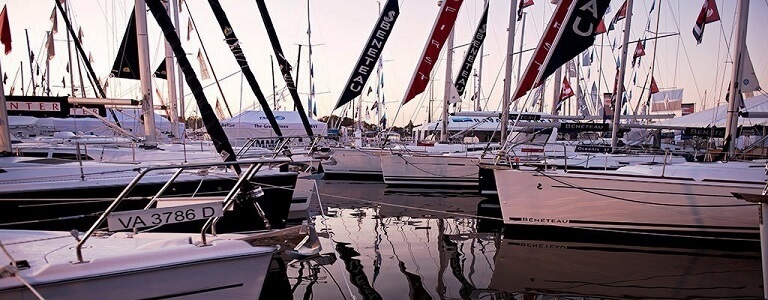
A couple of years ago I reported on the Ft. Lauderdale Piss-Off for powerboats. There the objective appeared to be to make the most ridiculous air conditioning cooling water discharge, in particular being at the greatest height and with the furthest trajectory, while producing the greatest audible nuisance along the way. The desired effect was seemingly to fill up the neighbor’s dinghy or piss on to the dock and drench a boat shoe or two. Last week at the Annapolis Sailboat Show it was the blow-boats turn, where some interesting and innovative solutions were to be found.
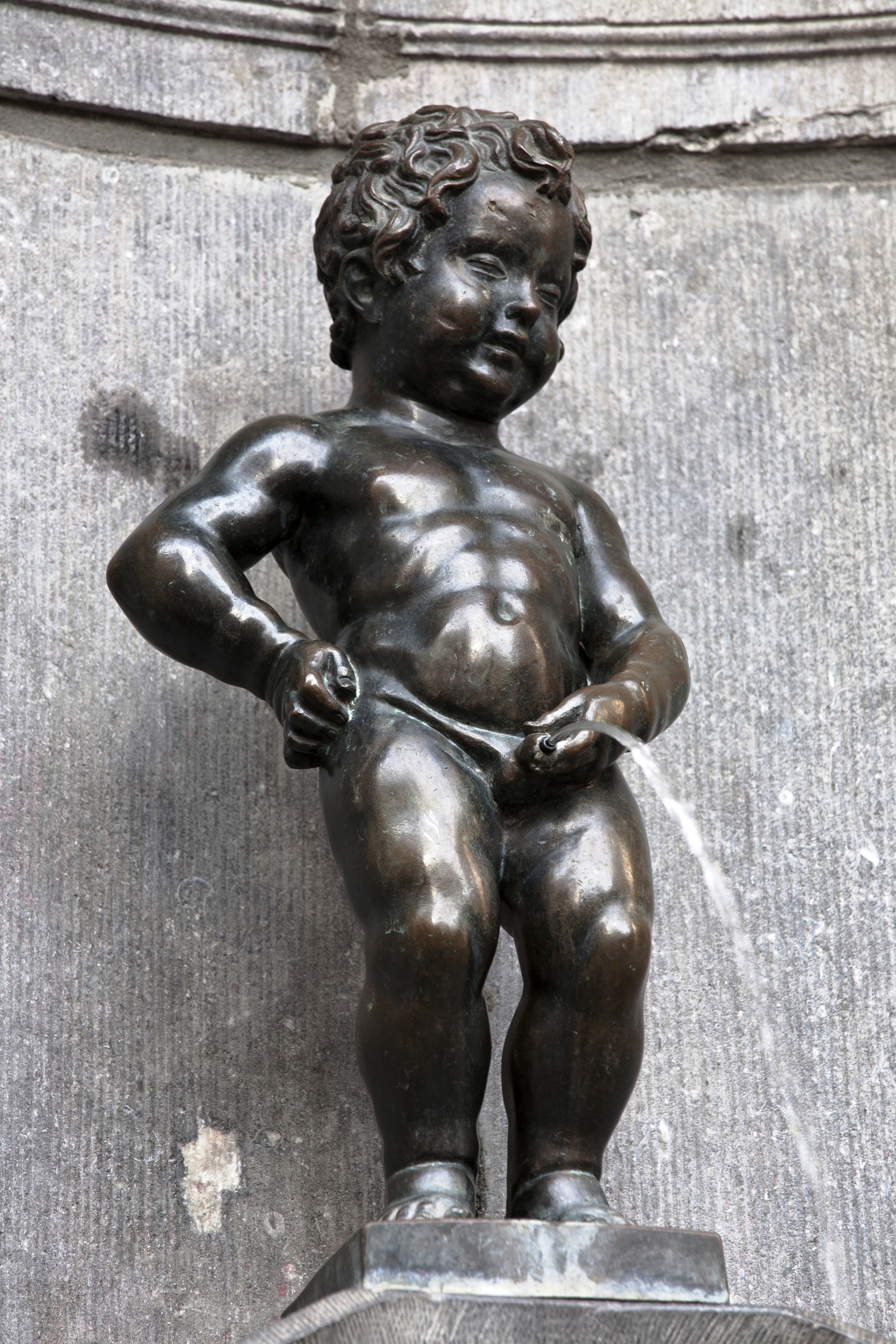 Last weekend saw another great Piss-Off competition at the Ft. Lauderdale International Boat Show, where the Europeans, Asians, and Antipodeans once again attempted to wrest the trophy away from long-time champions the USA.
Last weekend saw another great Piss-Off competition at the Ft. Lauderdale International Boat Show, where the Europeans, Asians, and Antipodeans once again attempted to wrest the trophy away from long-time champions the USA.
In the land of silicone and testosterone, beer belly and Botox, avid boat builders proudly displayed their latest attempts at producing the most noticeable, noisy, and antisocial air conditioning water discharge possible.
Bonus points were awarded if the discharges were ridiculously undersized and so high that they could fill up a neighbor's dinghy or piss on to a dock and into the cockpit of the vessel on the other side.
RESULTS: Last - Poorest performers of all were those kill-joy Europeans who seem to prefer not to join in the fun and actually want to hide their discharges underwater. I guess that in a way this adds an element of uncertainty as to whether the pump is working or the strainer is clogged, thereby introducing some mystery to the on-board experience.
Last - Poorest performers of all were those kill-joy Europeans who seem to prefer not to join in the fun and actually want to hide their discharges underwater. I guess that in a way this adds an element of uncertainty as to whether the pump is working or the strainer is clogged, thereby introducing some mystery to the on-board experience.
 We're between boat shows at Coastal Climate Control right now, having just survived the two very successful back-to-back sail and power shows here in Annapolis and now find ourselves busily packing the show crates for the Fort Lauderdale extravaganza. My first taste of exhibiting came at the Annapolis shows in the late 80's, and back then my employers’ preferred dress code was a tie and blazer for the blow-boaters followed by open-neck shirts and gold chains for the stink-potters. Oh, how times have changed!
We're between boat shows at Coastal Climate Control right now, having just survived the two very successful back-to-back sail and power shows here in Annapolis and now find ourselves busily packing the show crates for the Fort Lauderdale extravaganza. My first taste of exhibiting came at the Annapolis shows in the late 80's, and back then my employers’ preferred dress code was a tie and blazer for the blow-boaters followed by open-neck shirts and gold chains for the stink-potters. Oh, how times have changed!
Then in '95, with Coastal just three years old, I had the barmy idea of challenging myself to the logistical nightmare of exhibiting at the Miami International Boat Show, which back then was on Miami Beach. Having never set foot on Miami Beach, I sought advice on accommodations from my buddy Dave who, as a race-boat captain, had competed in many regattas based in South Beach. He told me that I absolutely must stay at his favorite, The Avalon Hotel on Ocean Drive, and that he would call and set things up for me. The Avalon sounded like the perfect place to relax quietly after a hard day at the show, so I duly booked a room and arranged parking for my van and trailer.
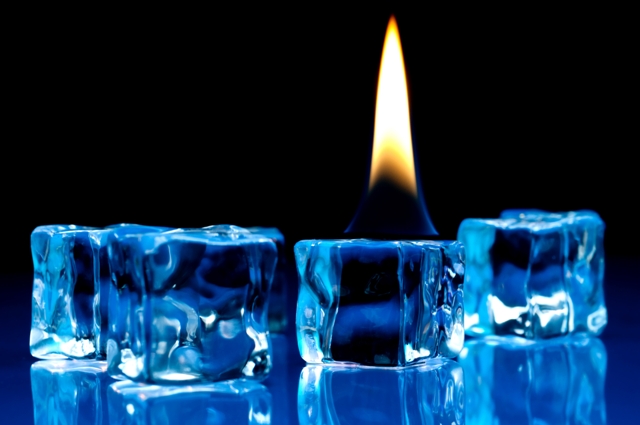 If you didn't know it already, the term Btu stands for "British thermal unit". I don't know what gave the Brit's the right to have their own thermal unit, but let's hope they don't ask for it back any time soon, as it is so much easier to comprehend than the metric equivalents using Joules, Calories, etc.
If you didn't know it already, the term Btu stands for "British thermal unit". I don't know what gave the Brit's the right to have their own thermal unit, but let's hope they don't ask for it back any time soon, as it is so much easier to comprehend than the metric equivalents using Joules, Calories, etc.
It's common to see the cooling and heating capacity of air conditioners, refrigerators, furnaces, etc., being shown by their Btu ratings or Tons (1 Ton of refrigeration = 12,000 Btu), but what exactly is this Btu? What does it look like? And does The Queen have one?
Simply put, one Btu is the amount of heat required to be added to, or extracted from, one pound of pure water in order to raise or lower its temperature by one degree Fahrenheit. This is about the same amount of heat as given off by a match that's used to light a fire.
So, if we have one pound of water at 100°F and add 40 Btu to it, its temperature will rise to 140°F. If we removed 40 Btu's from our one pound of water, its temperature will drop to 60°F. If you are all following this so far it's not too surprising, as what I've described above is known as "Sensible Heat", and, as you are already reading this, then obviously you are all very sensible people!
Now, if we keep on adding Btu's to our one pound of water, it will keep rising in temperature at a linear rate of 1°F for each Btu added until it starts to boil, which at sea level will be 212°F (100°C).
At boiling point something very interesting happens....

So, let’s say that you bought a 16,000 Btu air conditioner from Coastal Climate Control and politely rejected our suggestion to add an EasyStart compressor soft start device. Then, the first time you try starting it from your aging Ohno generator it issues a disturbing death-like groan as the compressor tries to start, and then the poor thing pops its breaker. So, what just happened there?
 Down south they have Miracle Mussels ...
Down south they have Miracle Mussels ...
And lurking in many harbors are evil, vindictive, plastic baggies.
What do they all have in common? They can all ruin one's day by clogging sea water intakes and strainers for refrigeration or air conditioning.
Anyone who has ever had to rid a sea strainer of Sea Snot (AKA Sea Nettle; Jellyfish) will know that this can be an unpleasant task. I'm told that in the coastal waters of Louisiana, Alabama, and other areas of the Gulf Coast, mussels and other sea-critters can grow in numbers resembling an armada in a matter of days, clogging not only strainers, but hoses, intakes and much more.
The part floating, part sinking, part ready-to-clog-an-intake plastic bag, is also a nuisance, but typically gets sucked onto the outside of the intake thru-hull, and then floats/sinks away once the pump is stopped.
In light of the chaos these latent disasters can cause, it's no wonder that some boaters take serious measures to combat the threat. Plastic bags, like naughty schoolboys, are a mere annoyance, but swarms of Sea Snot are a real menace, and we see live-aboards in the Chesapeake fashioning domes out of chicken netting and positioning them over the sea water intake in an effort to keep the menace at bay (oh, pun eh?).
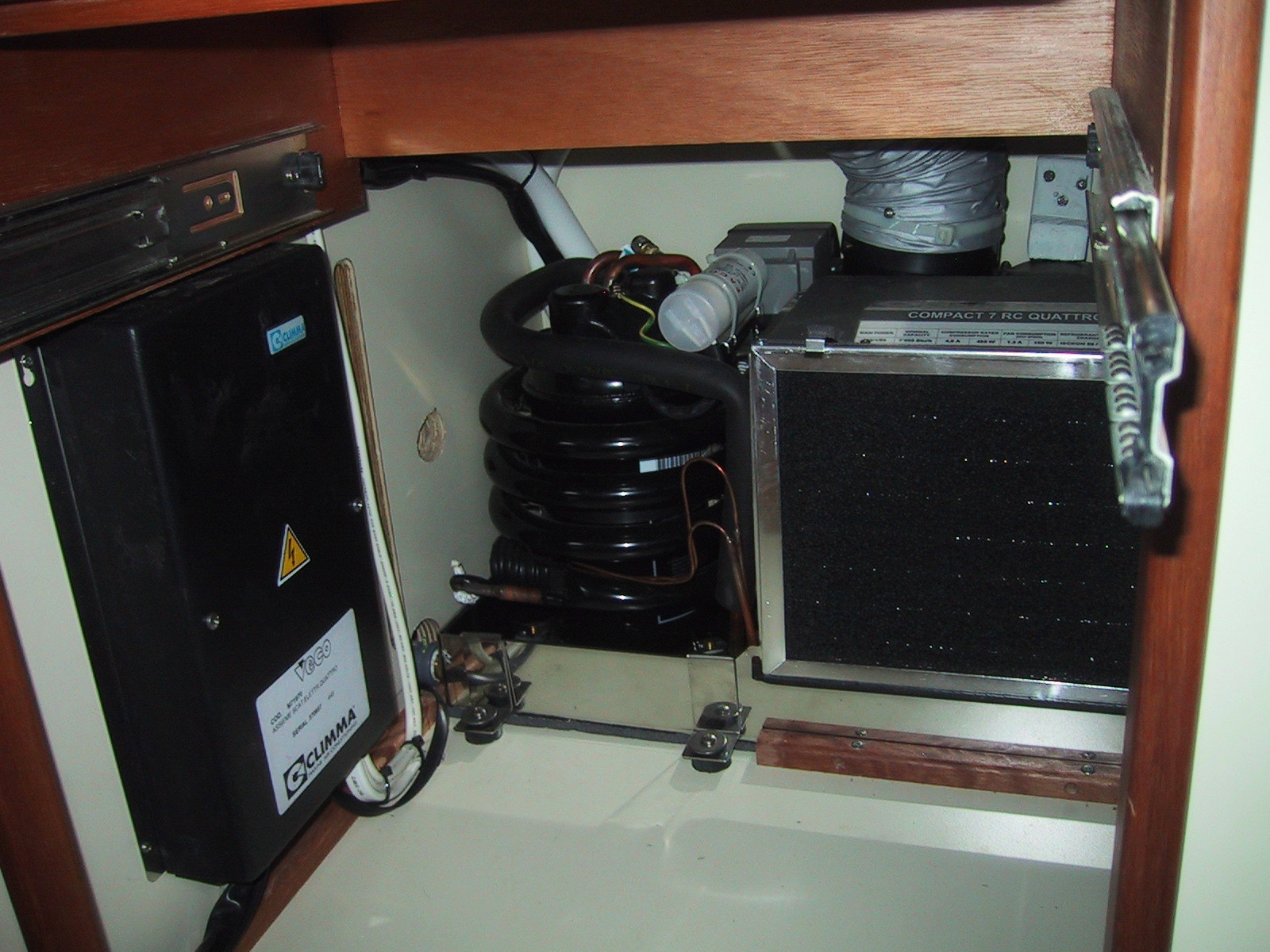
Reading and understanding refrigerant gauges made easy
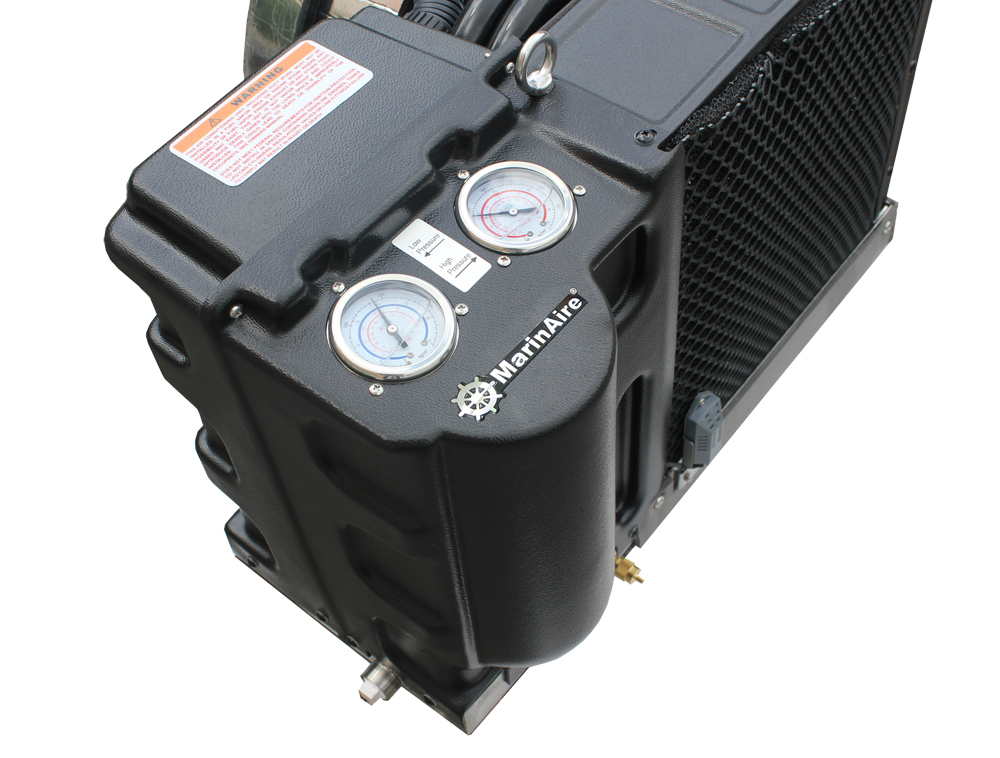 It dawned on me the other day that, although those clever chaps at MarinAire took the enlightened step of installing refrigerant pressure gauges on their larger air conditioning units, the lay person would have no idea what he or she were looking at. I’m sure that these gauges will prove to be a wonderful resource during remote troubleshooting sessions with trained air conditioning technicians, but I’m thinking that a few words on their function, plus a hint as to what could be considered “normal” readings, wouldn’t go amiss.
It dawned on me the other day that, although those clever chaps at MarinAire took the enlightened step of installing refrigerant pressure gauges on their larger air conditioning units, the lay person would have no idea what he or she were looking at. I’m sure that these gauges will prove to be a wonderful resource during remote troubleshooting sessions with trained air conditioning technicians, but I’m thinking that a few words on their function, plus a hint as to what could be considered “normal” readings, wouldn’t go amiss.

Oh boy, if only that were true! But unfortunately there is no such thing, and so comparing the performance of one marine air conditioning manufacturer's product to another comes down to comparing the manufacturer's published specifications.;
Keep the following in mind if you are in the market for air conditioning for your boat.
Q – How can I be sure that a 16,000 Btu air conditioner from Brand X actually produces 16,000 Btu of cooling and heating?
A – To be blunt, you can't! If it were a residential or commercial unit you'd be assured of the capacity rating as there are strict compulsory standards in these industries, but not in the marine business.
A marine air conditioning manufacturer can label his system as whatever takes his fancy, which is usually dictated by marketing strategies. If only we had that "Btu Meter" to assess performance .....
Q – But surely there must be a base-line for a prospective buyer to be able to assess one manufacturer's system against another's.
A – Yes there is, it is the compressor. Every compression system has a compressor, and every compressor manufacturer publishes performance data for their individual models. Most marine air conditioning manufacturers simply use the compressor's Btu rating in determining what to label their products.
That's a simple solution, but

My first dabble with installing air conditioning on boats was in the mid ‘80’s. I was new to the game and was an eager gofer helping to install a system on a 44’ sailboat. When I mentioned this to my buddies at the bar, they were amazed to hear that you could actually install air conditioning on a sailboat, especially on one that small!
Fast forward a decade or three and we now have owners of much smaller boats not just wanting, but expecting to have air conditioning on their vessels. Owners of 25’ sailboats want to be able to sleep in comfort, and even those with 18’ walk-around powerboats with outboards are asking how they can get a blast of cold air on their faces as they zoom around having fun. Well, it can be done and it is being done, but there is some debate about how best to power the thing.
We offer the Climma 4,200 Btu air conditioner for just those applications, as well as for individual small cabins on larger boats. This a 110v mains-powered unit, so when the vessel is plugged in to shore power or a small generator it can run, but it can also be powered through a small inverter from a DC source such as a battery bank or an engine alternator.
 I was called up for jury duty a while ago, and on the second day of the trial I decided to take a leisurely walk from home into town rather than getting a ride. Although it was during a really hot spell in Annapolis, it was before 8am and so I didn’t expect any undue effects from the heat as I was wearing only a cotton dress shirt with no tie or jacket (plus other stuff from the waist down, of course). By the time I reached the courthouse door, I had but a mere hint of perspiration, but in the time it took to get through security, my metabolism had switched into overdrive and left me oozing sweat from every pore, with my shirt visibly wet both front and back.
I was called up for jury duty a while ago, and on the second day of the trial I decided to take a leisurely walk from home into town rather than getting a ride. Although it was during a really hot spell in Annapolis, it was before 8am and so I didn’t expect any undue effects from the heat as I was wearing only a cotton dress shirt with no tie or jacket (plus other stuff from the waist down, of course). By the time I reached the courthouse door, I had but a mere hint of perspiration, but in the time it took to get through security, my metabolism had switched into overdrive and left me oozing sweat from every pore, with my shirt visibly wet both front and back.
Next I had to traverse across the waiting hall to reach the jury waiting room, with 100+ seated souls all looking in the direction of this sweat-ball parading past them. You know, initially I thought that the sizeable number of prospective jurors in shorts, flip-flops, scanty flimsy dresses, and t-shirts with foul messages, must have missed the memo about dressing soberly and respectfully. On reflection, though, I’m now of the opinion that this was an intentional move on their part in order to hopefully not get picked for service. Maybe it was me that missed the memo…
So, there I was, sweating profusely in the air conditioning, but isn’t air conditioning supposed to prevent this sort of thing? So what happened?
Phone: (301) 352-5738
Email: info@CoastalClimateControl.com
Office | Warehouse:
1598 Whitehall Road, Suite D
Annapolis, Maryland 21409